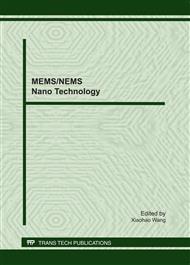p.305
p.311
p.316
p.320
p.327
p.331
p.336
p.341
p.345
Experimental Investigations of Anode Structure on the Performance of Air-Breathing µDMFC
Abstract:
In this paper, silicon-based micro direct methanol fuel cells (µDMFCs) with different anode structures were designed and investigated experimentally, the current collectors were fabricated using micro-electromechanical system (MEMS) technology. a novel encapsulation method was also designed using PDMS. The study of the effect of different anode flow fields suggested that the serpentine flow field has the optimal performance. The experimental results also revealed that an open ratio of around 47% led to the best cell performance, a maximum of power density of 13.2 mW/cm2 was achieved with 1.0 M methanol solution.
Info:
Periodical:
Pages:
327-330
Citation:
Online since:
June 2011
Authors:
Price:
Сopyright:
© 2011 Trans Tech Publications Ltd. All Rights Reserved
Share:
Citation:


